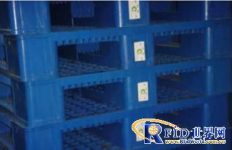
Chongqing Tobacco-RFID Application in Logistics Distribution
[ad_1]
Problems with the old model
The front end of the real-time operation management information system must be supported by the automatic identification system. How can the information interaction between the information system and the job site be realized? How can the cost be reduced, and the job information on the site can be accurately collected in real time? It is the design of the entire system. problem.
Solution adopted
One: Use RFID technology to track and manage inventory
1. Implement number management of pallets in the logistics center, and manage pallets in real time through RFID technology to achieve inventory management
2. Install on each trayRFID tags, Write number label
3. When harvesting, use handheld RFIDReader, To associate inventory information with pallet numbers.
4. Reusable labels can reduce costs
2: Fully automatic information collection
1. Automatic elevator
The automatic hoist is equipped with a fixed RFID reader. When the palletized pallet is moved to the hoist, the system will automatically read the information of the RFID tag in the pallet and send it to the corresponding floor
2. RFID forklift
Install a fixed reader on the forklift to maintain and manage the real-time data transmission of the system through the wireless local area network.
During the warehousing operation, the pallet information will be automatically read and the forklift driver will be prompted to deliver the goods to the designated location.
When moving the warehouse, the system will prompt the pick-up location and confirm the information of the cargo pallet.
Three: Real-time information exchange


Effect after use:
One: Real-time
Due to the use of RFID and wireless local area network technology, the information of the entire production site is collected in real time and accurately and fed back to the production management information system. So that the system can grasp the production progress, inventory and other real-time dynamics in real time, and implement on-site scheduling.
Two: paperless
The information interaction between the management information system and the production positions has realized real-time, electronic and paperless, thereby improving work efficiency, reducing errors, and reducing inventory, while basically eliminating the cost of communicating information through paper. Time delays and artificial data errors.
Three: Automation
The use of RFID automatic identification technology not only safely eliminates the operations and possible errors required for manual information collection, but also realizes the integration of RFID technology and the automated production equipment of the system to achieve the automation level of the equipment and increase the production efficiency.
[ad_2]



